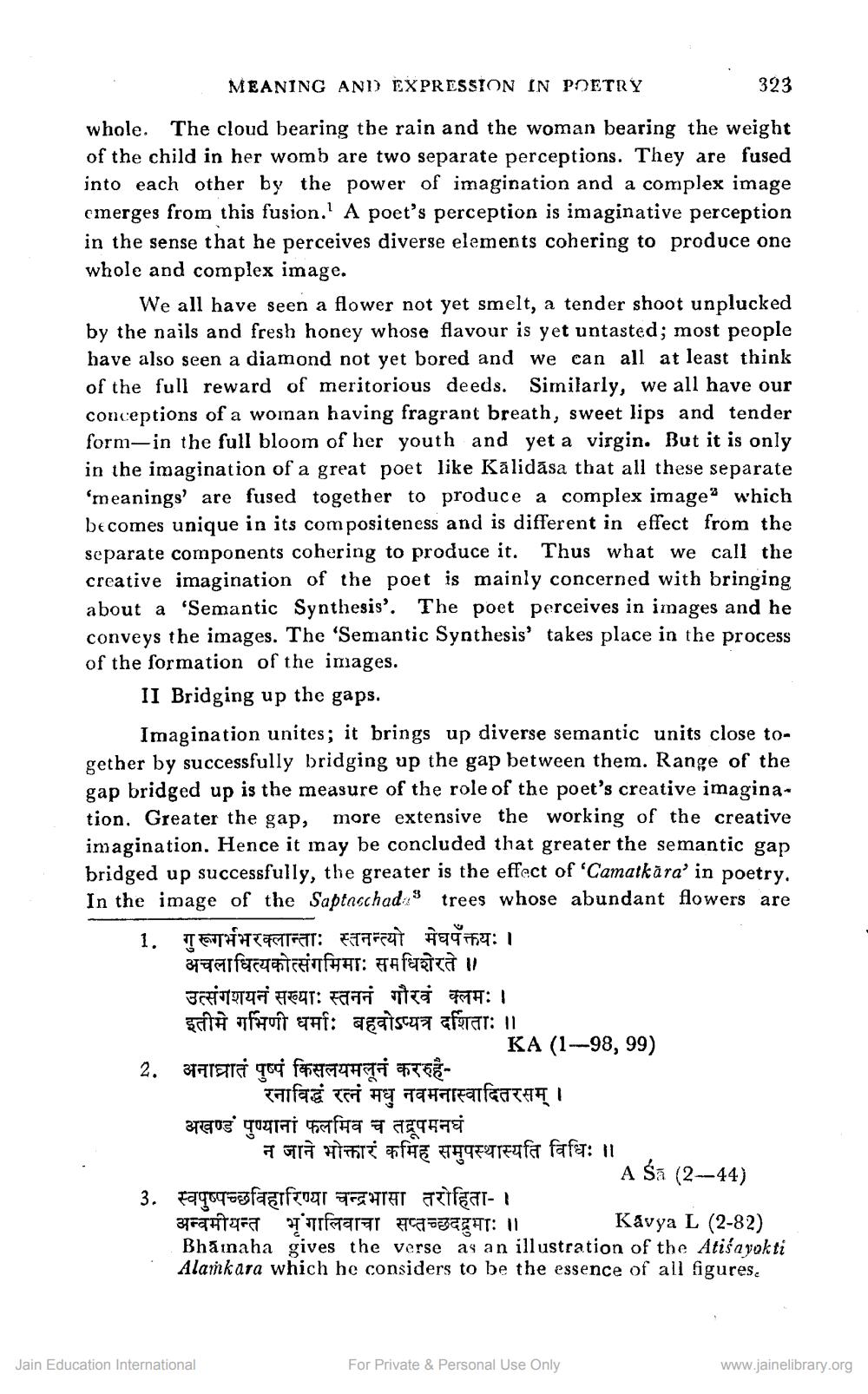________________
MEANING AND EXPRESSION IN POETRY
323
whole. The cloud bearing the rain and the woman bearing the weight of the child in her womb are two separate perceptions. They are fused into each other by the power of imagination and a complex image emerges from this fusion.' A poet's perception is imaginative perception in the sense that he perceives diverse elements cohering to produce one whole and complex image.
We all have seen a flower not yet smelt, a tender shoot unplucked by the nails and fresh honey whose flavour is yet untasted; most people have also seen a diamond not yet bored and we can all at least think of the full reward of meritorious deeds. Similarly, we all have our conceptions of a woman having fragrant breath, sweet lips and tender form-in the full bloom of her youth and yet a virgin. But it is only in the imagination of a great poet like Kālidāsa that all these separate 'meanings are fused together to produce a complex image2 which becomes unique in its compositeness and is different in effect from the separate components cohering to produce it. Thus what we call the creative imagination of the poet is mainly concerned with bringing about a 'Semantic Synthesis'. The poet perceives in images and he conveys the images. The 'Semantic Synthesis' takes place in the process of the formation of the images.
II Bridging up the gaps.
Imagination unites; it brings up diverse semantic units close together by successfully bridging up the gap between them. Range of the gap bridged up is the measure of the role of the poet's creative imagination. Greater the gap, more extensive the working of the creative imagination. Hence it may be concluded that greater the semantic gap bridged up successfully, the greater is the effect of 'Camatkāra’ in poetry. In the image of the Saptacchad trees whose abundant flowers are 1. TE A CTIFT: F7F747 977527: 1
अचलाधित्यकोत्संगमिमाः समधिशेरते ।। उत्संगशयनं सख्याः स्तननं गौरवं क्लमः । इतीमे गर्भिणी धर्माः बहवोऽप्यत्र दर्शिताः ।।
KA (1-98, 99) 2. BATETIT gooi
f anTË Tee
रनाविद्धं रत्नं मधु नवमनास्वादितरसम् । अखण्डं पुण्यानां फलमिव च तद्रूपमनघं न जाने भोक्तारं कमिह समुपस्थास्यति विधिः ॥
A Śa (2-44) 3. Fa9095gfaatfrog FF HAT azifear
37FapTFT or farrazaga: 11 Kavya L (2-82) Bhāinaha gives the verse as an illustration of the Atiś ayokti Alamkara which he considers to be the essence of all figures.
Jain Education International
For Private & Personal Use Only
www.jainelibrary.org




